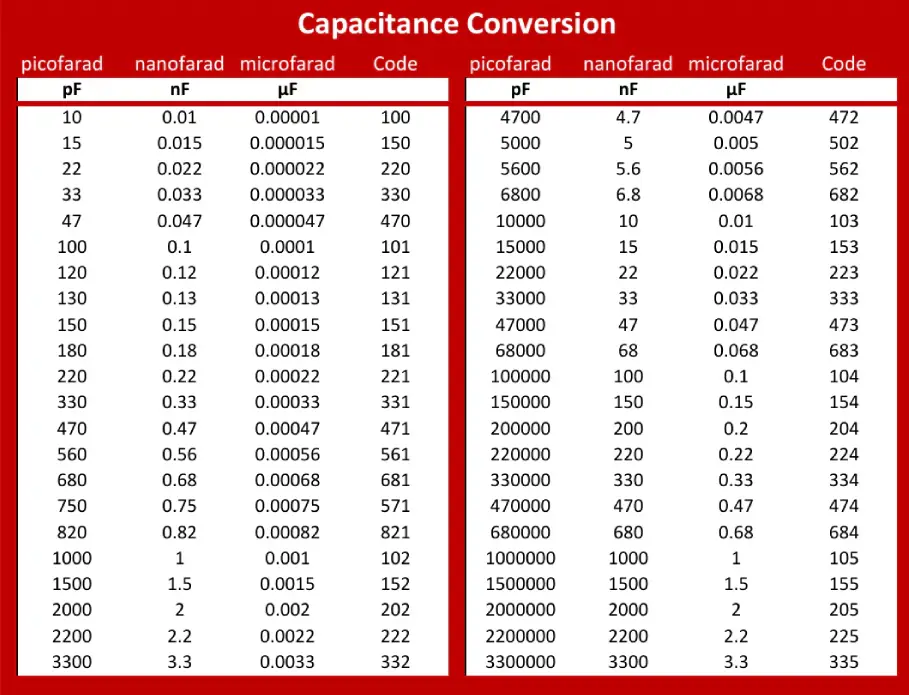Capacitor Conversion
Capacitor conversion involves replacing a capacitor with a different type or value while maintaining circuit function. This may be necessary for repairs, upgrades, or due to availability.

Capacitor Conversion Chart
A Capacitor Conversion Chart provides a quick reference for identifying suitable replacement capacitors. We list equivalent capacitors based on factors like capacitance, voltage rating, and size. This helps simplify the selection process, ensuring compatibility and proper circuit function. Download our Capacitor Conversion Chart today to streamline your next project!
Remember: Capacitor conversion should be approached carefully, considering factors like voltage rating, tolerance, and physical size.

Capacitor Conversion Chart
A Capacitor Conversion Chart provides a quick reference for identifying suitable replacement capacitors. We list equivalent capacitors based on factors like capacitance, voltage rating, and size. This helps simplify the selection process, ensuring compatibility and proper circuit function. Download our Capacitor Conversion Chart today to streamline your next project!
Remember: Capacitor conversion should be approached carefully, considering factors like voltage rating, tolerance, and physical size.
Capacitor Conversion Online
Capacitor conversion involves replacing a capacitor with a different type or value while maintaining circuit function. This may be necessary for repairs, upgrades, or due to availability.
Capacitor Conversion Online
This tool helps you find suitable replacement capacitors.
Capacitor Convert AC to DC
A capacitor itself does not directly convert AC (Alternating Current) to DC (Direct Current).
However, it plays a crucial role in smoothing the output of a rectifier circuit, which is the essential part of converting AC to DC.
Here’s how it works:
Rectification:
- An AC input signal is first passed through a rectifier (like a diode bridge).
- The rectifier converts the AC waveform into a pulsating DC waveform. This pulsating DC still has significant variations in voltage.
Capacitor Smoothing:
- A capacitor is connected in parallel with the load (the device that uses the DC power).
- During the positive half-cycle of the rectified waveform: The capacitor charges up to the peak voltage of the waveform.
- During the negative half-cycle: The rectifier blocks the current flow. The capacitor then discharges slowly through the load, providing a relatively constant DC voltage.
In essence:
- The capacitor acts as a temporary energy storage device.
- It stores energy during the peaks of the rectified waveform and releases it slowly during the valleys, thus smoothing out the voltage fluctuations.
Result:
By using a capacitor in this way, the ripple (the variations) in the DC output is significantly reduced, resulting in a smoother and more stable DC supply.
Key Points:
- Capacitors alone cannot convert AC to DC.
- They are essential components in rectifier circuits for smoothing the DC output.
- The effectiveness of the smoothing depends on the capacitor’s capacitance and the load’s current demands